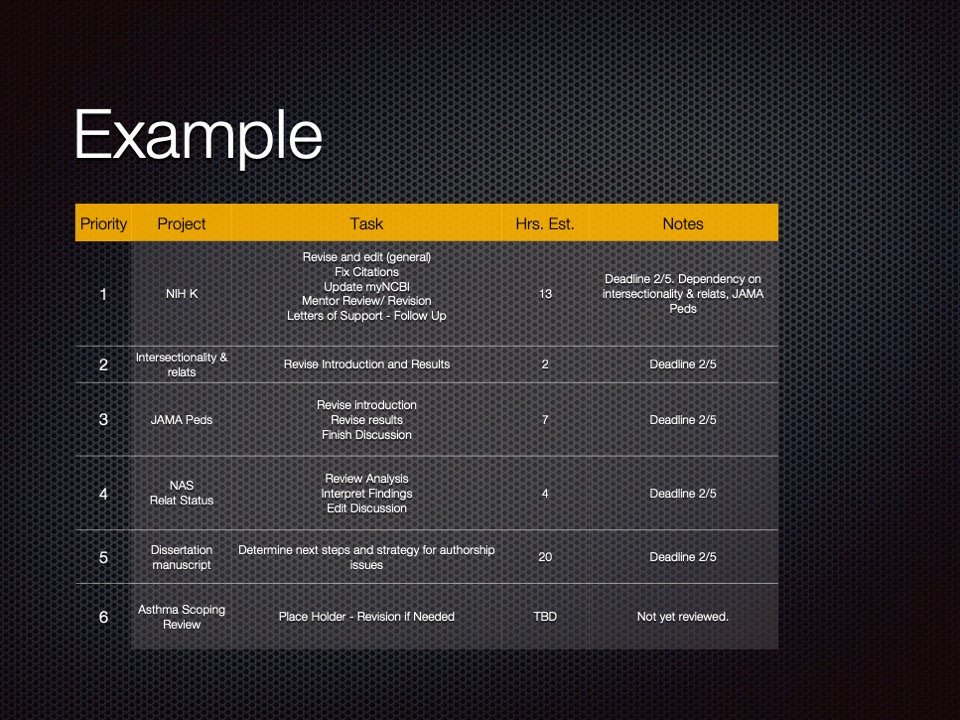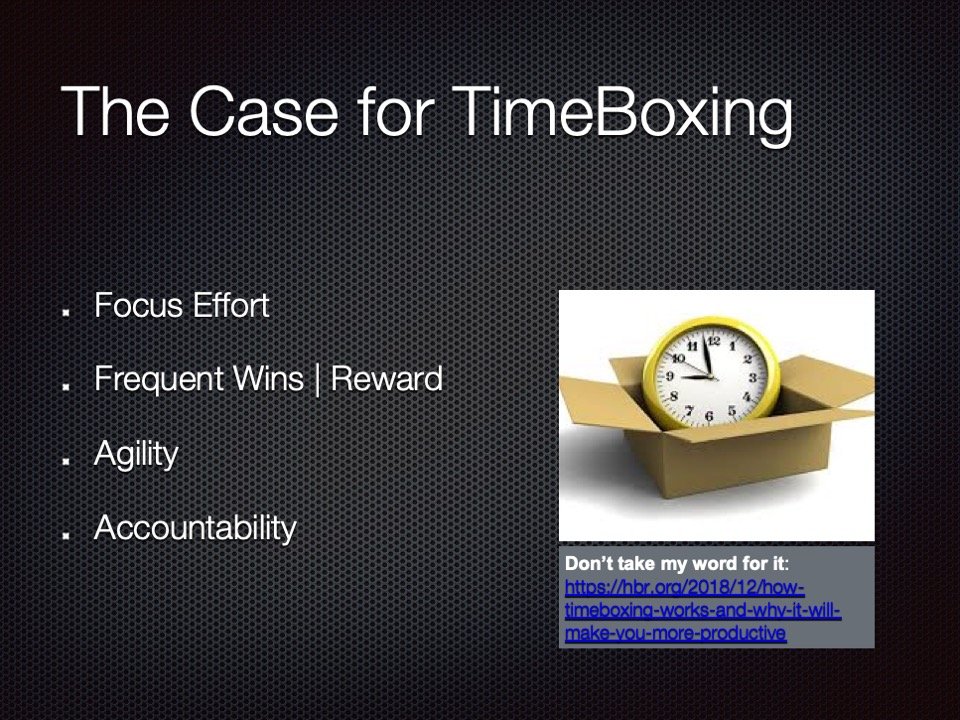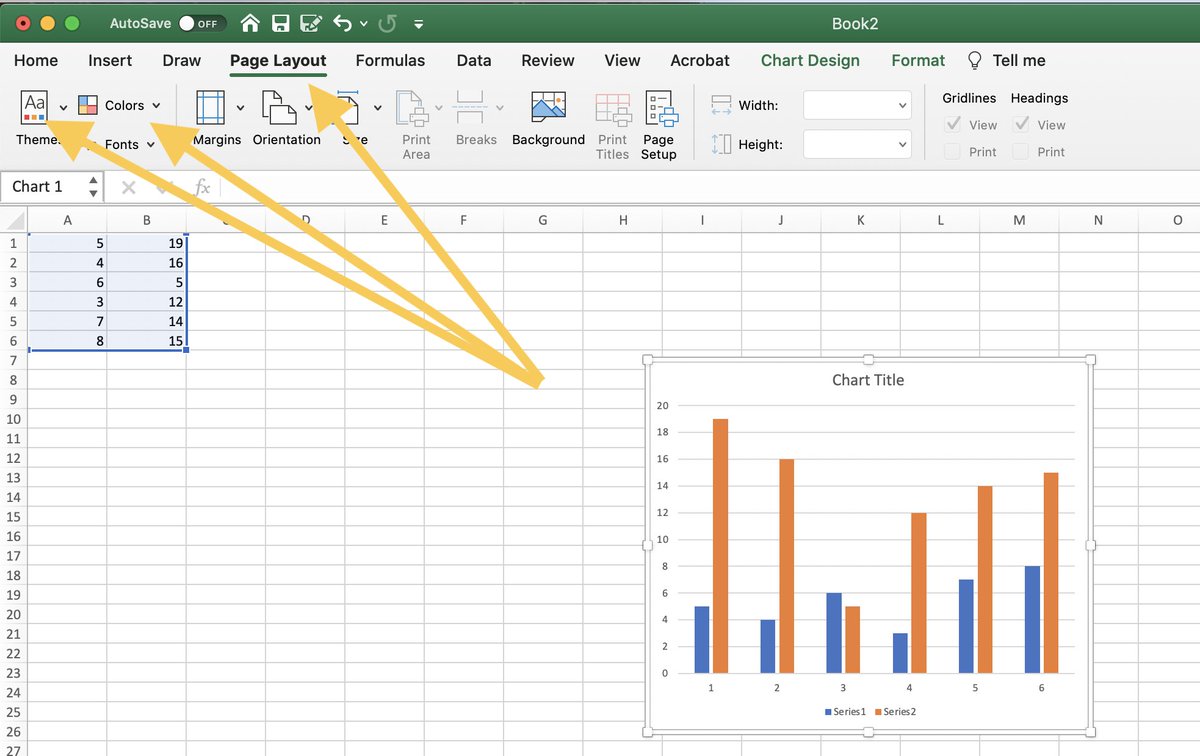My friend, the brilliant & talented @CNortonDane is a GENUWINE project manager (like she is a certified proj manager, which is super cool!). In advance of a training she did for @CU_Nursing postdocs in Jan, we did a consult on applying PM to an academic context. /1
We talked through my list of projects (which she calls a "backlog") & some strategies for organizing, prioritizing, and taking control of them--to get things done! I had/have so many projects it can feel paralyzing at times, and can feel hard to make true progress on any. /2
After my consult with her, I slept better than I had in a while (as per my apple watch) and I felt like things were more manageable. In the ensuing months, I submitted (and resubmitted) my K and submitted 5 first-authored pubs (and multiple other pubs). /3 #AcademicTwitter
I asked her if I could share her PM presentation here on twitter bc I feel like one of the things academics say over and over is that we need project management training. I thought some of the concepts in her presentation might be helpful. /4 #AcademicTwitter #AcademicChatter
She agreed and set up a twitter account, and I am hoping she can fill in some of the details I missed - and maybe answer questions. /5 

A backlog is your list of projects. I made my list in an excel spreadsheet that I then pasted into OneNote, which is my preferred place to keep my lists and notes. Unfortunately OneNote is really bad for tables, so I have to update it in excel. (BOO!)
/7
/7

This was my backlog. I divided it up by who the PI was for each of the projects to help me make sure to prioritize some of my own projects over or equivalent to the projects helmed by others. This list felt overwhelming and as though I would never complete all of the projects.
/8
/8

For me, a challenge as a postdoc--which I assume won't go away when/if I am a faculty--is balancing my own projects with the projects of others (esp. senior faculty's projects). I find myself often putting mine aside to meet others' deadlines. /9
But to get first-authored pubs, I need to prioritize my projects too! Carole taught me to say to people that I would get back to them once I checked my list of priorities and deadlines. This gives me time to think and assess rather than just say yes to everything. /10
Carole recommends then defining each task further. These are suggested spreadsheet headings:
Priority: force priority, no 2 projects can have the same priority number.
Project name: give it a good name
Task: broad tasks involved in project (e.g., writing, data analysis). /11
Priority: force priority, no 2 projects can have the same priority number.
Project name: give it a good name
Task: broad tasks involved in project (e.g., writing, data analysis). /11

Task description: what are the tasks involved in this project – break down the tasks into as many small pieces as you can – use verbs and make it action oriented.
Acceptance criteria: how will you know that this project is DONE? /12
Acceptance criteria: how will you know that this project is DONE? /12
Stakeholder: Who has a stake in this being completed (e.g., your mentor, etc.)
Duration estimate: How long do you think – if you cold focus on just this and this alone - will it take you to finish this project?
Obstacle/blockers: self explanatory! /13
Duration estimate: How long do you think – if you cold focus on just this and this alone - will it take you to finish this project?
Obstacle/blockers: self explanatory! /13
Sprint due: Sprints are periods of time when you focus on your priorities and at the end of which you evaluate your progress and your priorities. For example, if your sprint is 2 weeks, in two weeks you evaluate your progress towards your goals and adjust if needed. /14
You have one sprint overall – not one sprint per project. The max a sprint can be is 4 weeks. It can be helpful to evaluate your progress in your meetings with your mentor. Carole said, “A two-week sprint is better than a 3-month slog.” /15
Constraint: do you have a drop dead date, are you competing with the priorities of another project for resources, vacations of others... /16
This is my set of top priorities – these aren’t all the categories noted on the previous slide, but it shows you a snapshot of how we tried to tame my backlog. /17 

Timeboxing is actually scheduling time – in your calendar – to work on specific tasks. This REALLY works for me.
As an aside, the 40 hour workweek obv doesn’t really apply to academia–we are kind of expected to work all the time, which may or may not be productive/healthy. /18
As an aside, the 40 hour workweek obv doesn’t really apply to academia–we are kind of expected to work all the time, which may or may not be productive/healthy. /18

Planning your sprint helps you create an achievable chunk of tasks and helps you be planful about how you spend your time. /20 

For a while I did this each morning with my academic goals group and it had been really effective. I stopped doing it bc my goals group was a bit inconsistent in terms of membership and attendance. I'd like to try it again (anyone want to create a goals group?). /21 

IRADs are a tool for taking notes during meetings–this helps keep things focused & moving forward.
Risks: issues that haven’t happened yet (++ or --), what are they, & how to respond if they do happen. We have been doing this for our research team meetings and it helps. /22
Risks: issues that haven’t happened yet (++ or --), what are they, & how to respond if they do happen. We have been doing this for our research team meetings and it helps. /22

For me as a postdoc, managing my time and priorities has been a massive learning experience. I strongly believe that developing good habits in postdoc is really important for my career moving forward. /23 #AcademicTwitter
In particular, the tasks in the orange box (the top left quadrant) - tasks that are important, but not urgent - are the ones that are the hardest to prioritize. This process helps me keep them at the forefront. /24 #AcademicTwitter 

Okay - I hope that helps! Feel free to ask questions! Thanks @CNortonDane for helping me develop tools and habits!! And for being simply awesome!!! /25
• • •
Missing some Tweet in this thread? You can try to
force a refresh










